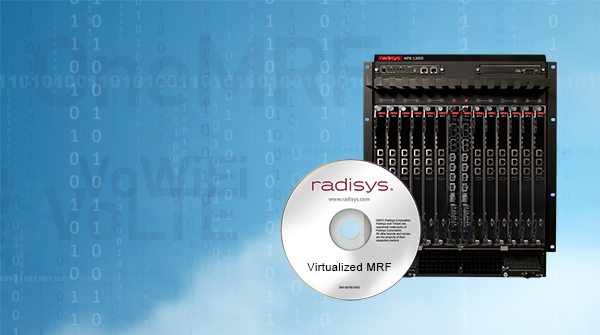As mobile networks migrate to IP architectures, media processing is increasingly critical, but it is not a core competency for most equipment vendors. Radisys marketing director Ray Adensamer says that Nokia Networks chose to outsource media processing in order to keep its own team focused.
“They want to focus their resources on what they’re very, very good at, which is applications, signaling control and the integration services that go into a carrier deployment,” said Adensamer. “Media processing is a relatively small part of a solution, but it is very specialized, so a lot of partners are saying ‘let’s work with a specialist.'”
Nokia Networks has chosen Radisys’ media processing portfolio for its voice over LTE and voice over Wi-Fi solutions for standards-based IMS deployments. Nokia is deploying the IMS core for a major North American operator, and that deployment includes Radisys’s MPX-12,000 equipment in six data centers nationwide. The companies said the carrier will also deploy virtualized versions of Radisys’ media processing solution.
“There is a benefit to both hardware-based and software-based media processing,” said Adensamer, noting that hardware solutions are best for high density and high-capacity use cases, while virtualization offers more flexibility. “In the case of Nokia, they wanted to do it both in hardware and virtualized,” he said, adding that mobile operators have a range of perspectives on the best way to scale their networks, and Nokia wants to accommodate as many as possible.
“We’re able to quickly provide operators with the right media processing solution for their VoLTE deployment, whether it’s a virtualized solution or not,” said Michael Clever, SVP of core at Nokia Networks. “Radisys’ virtualized MRF has been certified within Nokia Networks’ telco cloud partner certification program to work with our virtualized VoLTE solution.”
Nokia’s IMS core with Radisys’s media processing solution is also in trials in Europe, and the companies are also working with a service provider in India.
VoLTE and VoWi-Fi
“Voice over Wi-Fi is probably growing faster than the VoLTE market,” said Adensamer, who added that the popularity of over-the-top video chat services like Skype is making voice calls over Wi-Fi a logical progression. Carriers want to offer IP-based calls that can include video, but maintaining video quality is the challenge.
“For an interactive service you need to have that 150 millisecond response time so that’s why they degrade the video, to increase that responsiveness,” Adensamer said.
Video can also be part of LTE voice calls, but Adensamer said this is a tough business case for mobile operators to support. “It can be done and technically it’s there, but it does require more bandwidth,” he said. “To do a video call maybe takes 10 times the network bandwidth as an audio call. Ideally, I’d like to get 10-times the revenue, but that doesn’t make sense. So that’s why it’s not getting taken up as much as you would think.”
Adensamer said that Radisys and Nokia are working on call transfer between VoLTE and VoWi-Fi, so that calls can move from one network to the other without any action by the user. This is the voice equivalent of seamless Wi-Fi data offload for carriers.
Transcoding narrow band audio is another key use case for media processing functions in the IP network. In the near term, most VoLTE calls will still originate from 3G phones with AMR narrow band audio codecs.
“As you roll out VoLTE you’re going to have this need for transcoding in the network, and that’s actually one of the bigger use cases that deploys media processing ports in the network,” Adensamer said.

